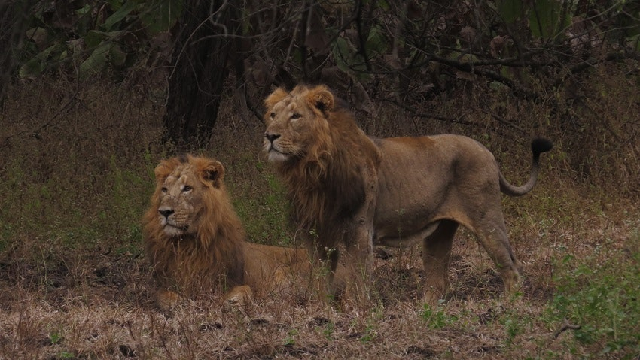New technique better maps their numbers and density.
Link the use of mathematical modelling with the understanding of ecosystems and sustainability for Biological Science students in years 4, 6, 7, 9, and 10.
Word Count: 363

Indian researchers have developed a method to more accurately map numbers and density of wild lions in their country’s Gir Forest by using the mammals’ unique whisker patterns and permanent body marks.
Asiatic lions (Panthera leo persica) are “an icon of conservation success”, write Keshab Gogoi and colleagues from the Wildlife Institute of India in the journal PLOS ONE, particularly compared to African lions whose numbers are plummeting.
After being hunted to the brink of extinction, local conservation efforts have increased the majestic, locally revered felines’ dwindling numbers from 50 to more than 500.
But current monitoring methods, such as total counts, can miss some lions while doubling up on others, thwarting one of the foundational pillars of conservation management and resource allocation.
These pillars include information on population numbers, abundance and threats such as human-wildlife conflict.
Gogoi and colleagues used a computer program to identify the lions by their whiskers and body marking and analysed the data using a mathematical modelling method, “spatially explicit capture recapture”, to calculate their density.
Out of 368 lion sightings they identified 67 individuals within more than 700 square kilometres of the protected area, from which they calculated 8.53 lions per 100 square kilometres.
Their locations were revealing; lion prides were not more concentrated where there were more of their key prey – chital and sambar – as expected, but rather in flat valley habitats and near areas where food is placed to attract them for tourist viewing.
This finding indicates that baiting lions for tourists disrupts their normal behaviour and social dynamics, and could impact the density of local prey, the authors say, noting similar patterns resulting from food provision in Canada’s black bears.
Accordingly, observations suggest that younger lions are growing up as scavengers rather than learning to be skilled hunters.
Such animals often come into conflict with humans as they prey on livestock – an increasing problem as their numbers keep growing and exceed the protected area, placing them and people at risk.
“The only population of Asiatic lions in the world survives in the Saurashtra landscape,” the authors say. “Conserving this sub-species with the use of best science and management is a global priority and responsibility.”
Login or Sign up for FREE to download a copy of the full teacher resource





